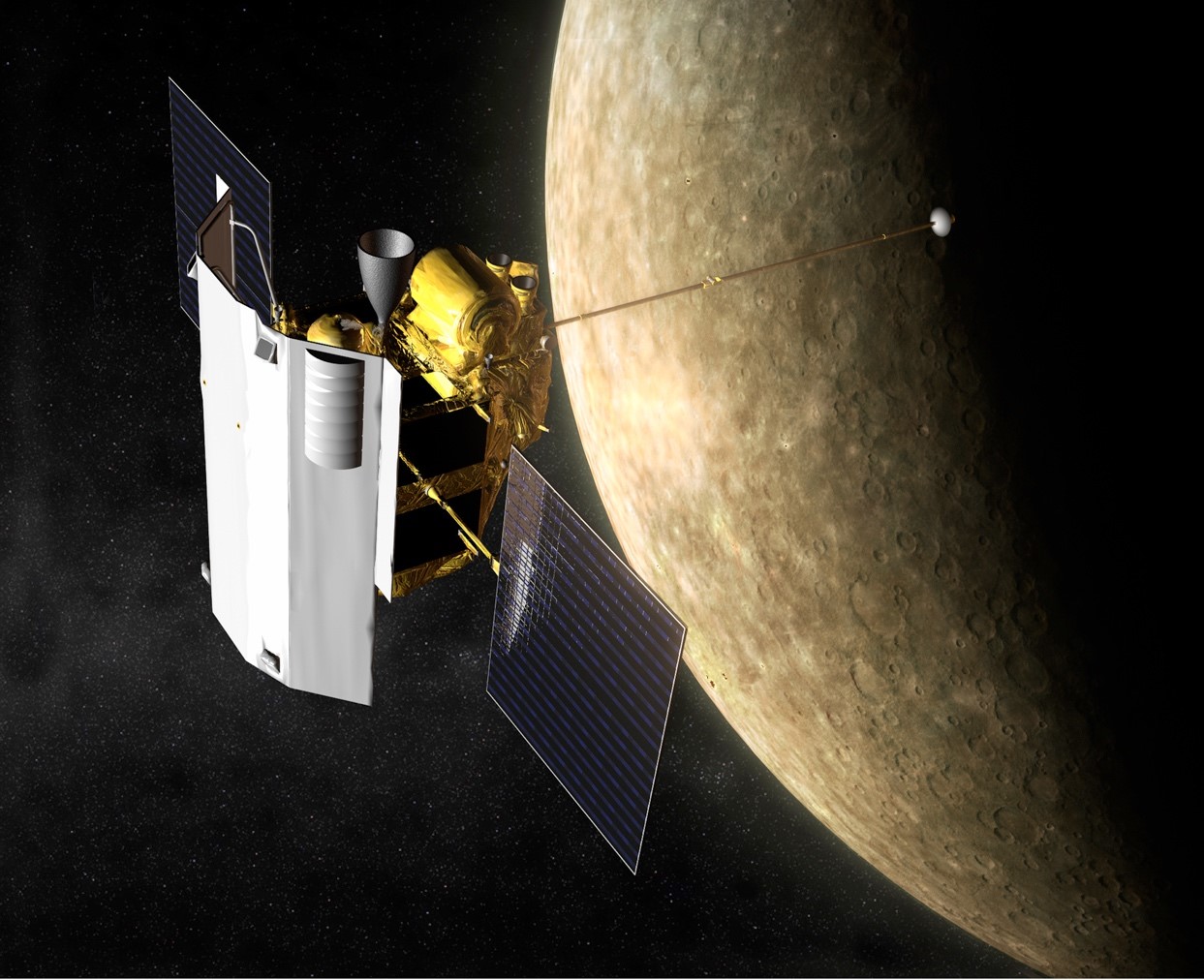Because the planet Mercury is so close to the Sun and feels the Sun’s strong gravity, Mercury’s orbit has provided important tests of Einstein’s theory of gravity and general relativity. Mercury’s orbit precesses more than expected from Newton’s law of gravity, but behaves just as predicted by general relativity. The MESSENGER spacecraft has allowed stricter tests of general relativity, based on the precise tracking of the spacecraft’s location while in orbit around Mercury. In a paper late last year, A. Genova and colleagues used the MESSENGER tracking and calculated whether MESSENGER’s motions were consistent with Einstein’s theory — and confirmed that part of the theory with uncertainty less than a quarter of what was known before.
As a side-result, Genova calculated how much the Sun’s mass is decreasing, a proportion of about 6 x 10-14 per year. This value is consistent with estimates of how much mass the sun expels out its poles and as coronal mass ejections. As the sun’s mass and gravity decrease, the size of the Solar System (its planets’ orbits) increases — very slightly and not worth losing sleep over. READ MORE
